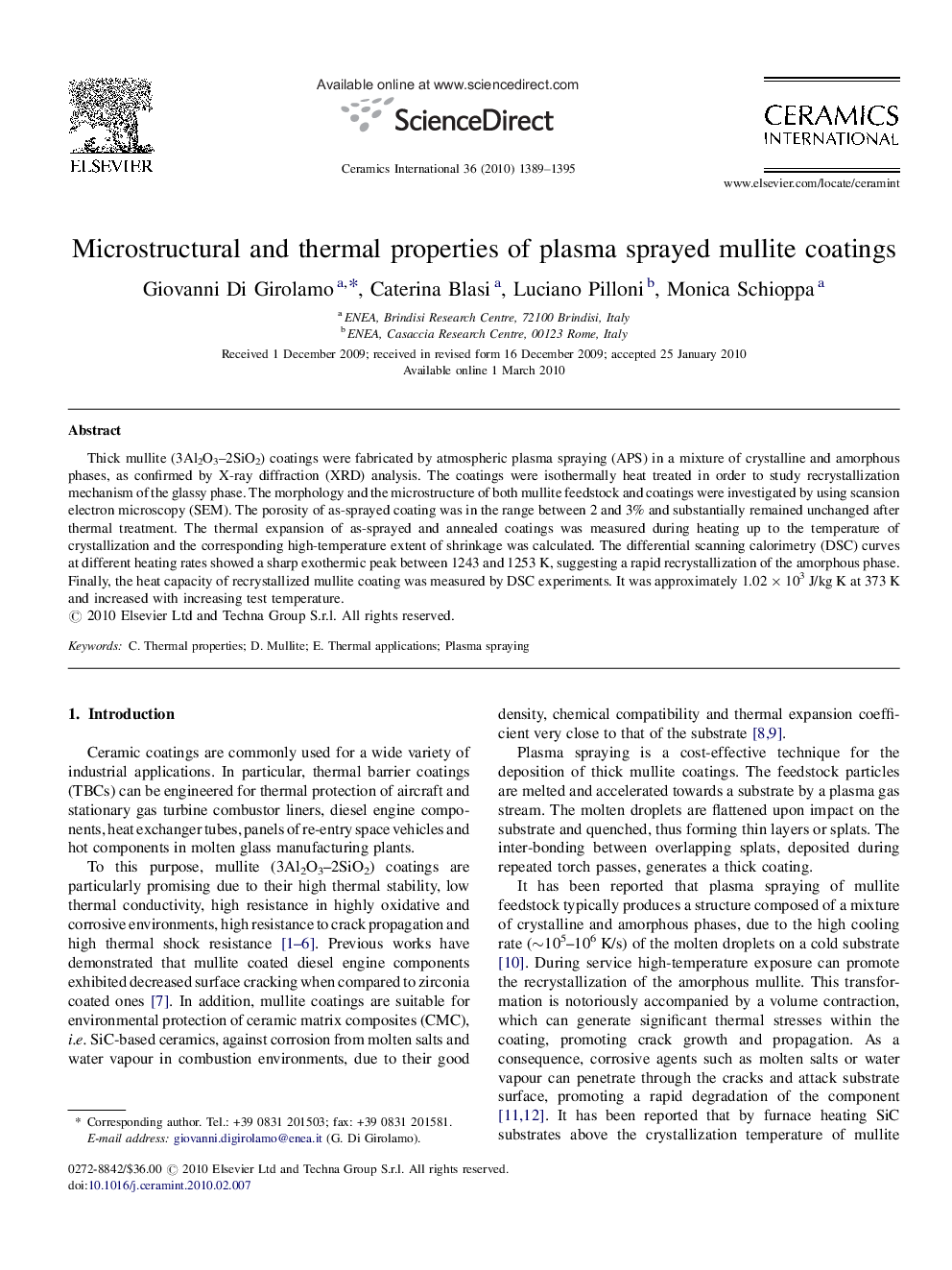| Article ID | Journal | Published Year | Pages | File Type |
|---|---|---|---|---|
| 1463935 | Ceramics International | 2010 | 7 Pages |
Thick mullite (3Al2O3–2SiO2) coatings were fabricated by atmospheric plasma spraying (APS) in a mixture of crystalline and amorphous phases, as confirmed by X-ray diffraction (XRD) analysis. The coatings were isothermally heat treated in order to study recrystallization mechanism of the glassy phase. The morphology and the microstructure of both mullite feedstock and coatings were investigated by using scansion electron microscopy (SEM). The porosity of as-sprayed coating was in the range between 2 and 3% and substantially remained unchanged after thermal treatment. The thermal expansion of as-sprayed and annealed coatings was measured during heating up to the temperature of crystallization and the corresponding high-temperature extent of shrinkage was calculated. The differential scanning calorimetry (DSC) curves at different heating rates showed a sharp exothermic peak between 1243 and 1253 K, suggesting a rapid recrystallization of the amorphous phase. Finally, the heat capacity of recrystallized mullite coating was measured by DSC experiments. It was approximately 1.02 × 103 J/kg K at 373 K and increased with increasing test temperature.
